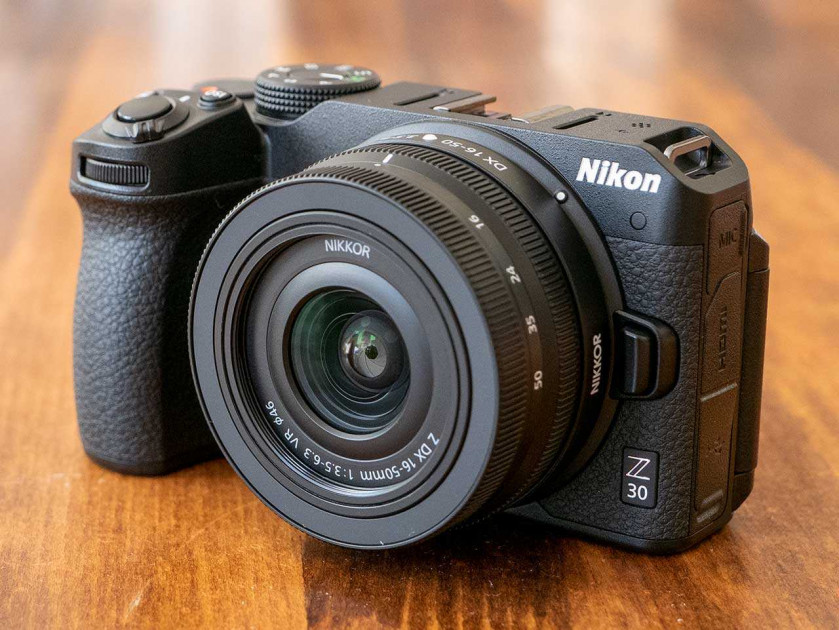
Introduction
Following the launch of their first APS-C sensor model, the Z50, the new Z30 is Nikon’s second mirrorless camera to feature this sensor size.
This new offering is aimed at vloggers and content creators looking for a lightweight, portable camera that offers better quality than their smartphone.
Despite its diminutive size, the Z30 uses the same Z lens mount as Nikon’s much larger full-frame sensor cameras, such as the Z9, Z7 II, Z6 II and Z5, which means that it can utilise the same range of Z branded FX lenses, albeit with a 1.5x crop factor applied.
In addition to the FX and three currently available DX Z-mount lenses, the existing FTZ Mount Adapter that was released with the Z6/7 models is also fully compatible with the Z30, which means that F-mount DSLR lenses can also be used with the new camera.
Key features offered by the Nikon Z30 include a 20.9 megapixel APS-C sensor, EXPEED 6 processor, 4K UHD video recording at 30p and 1080 Full HD up to 120p, both with no crop, a maximum of 125 minutes of continuous recording time, stereo microphones, fully articulating touch-screen LCD, autofocus system with 209 phase detection AF pixels, ISO range of 100-51200 that’s expandable to 20400, 11fps burst shooting with AF/AE tracking, Snapbridge, Wi-Fi and Bluetooth connectivity, and a body that weighs 350g.
The Nikon Z 30 is available now priced at £699 / $709.95 body only in the UK and USA respectively. Various kits with the DX format Z-mount lenses are also available. The Nikon Z30 is manufactured in Thailand.
Ease of Use
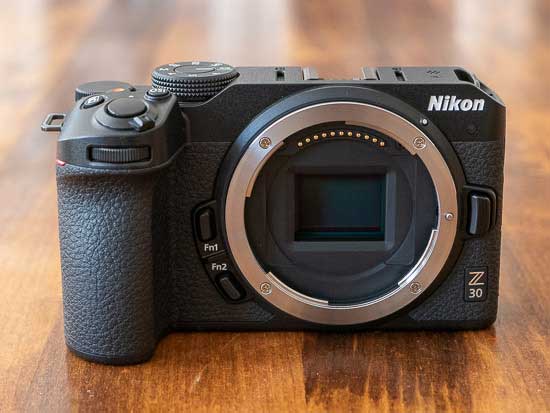 |
The introduction of the new Z30 means that there are now nine mirrorless cameras in Nikon’s camera range at the time of writing. Six of them are FX-format full-frame and three are DX-format APS-C models, with the Z30 joining the existing Z50 and Z fc cropped-sensor cameras.
In terms of how Nikon sees the Z30, it sits right at the bottom of the range underneath the Z50 and Z fc cameras in their positioning, and is currently the cheapest mirrorless camera that Nikon offer.
Nikon are hoping to tempt people to upgrade from their smartphones or their entry-level Nikon DSLRs with the new Z30, particularly those with a keen interest in vlogging and videography.
For the design of the Z30, Nikon has taken things a step further than they did for the Z50 cameras, not only miniaturizing their DSLR camera blueprint but also coming up with a new viewfinder-less design that subsequently looks more compact and sleeker than the Z50 and Z fc.
Arguing that its young, video-centric target audience won’t miss having a viewfinder, the Z30 looks just like a Z50 with the top sliced off.
It weighs in at a mere 350g body only, 45g less than the Z50, and measures 128 x 73.5 x 59.5 mm, making this a camera that you can truly carry anywhere and at all times without really noticing it.
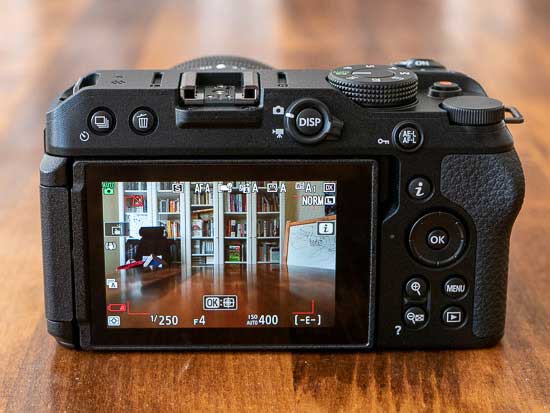 |
Nikon haven’t gone too far with the size reduction that the camera becomes unusable. The lovely handgrip is still relatively deep and chunky for such a small camera, while the rubberized covering around the whole camera body adds a tactile quality that belies the Z30’s entry-level price-point, as does the magnesium alloy build – this is no “plastic-fantastic’ camera.
While the Z30 doesn’t have the same levels of weatherproofing as models much further up the range, overall the build quality feels solid enough to withstand a little bit of rough and tumble as well as a variety of different weather conditions, if you take the necessary precautions to help protect it.
Control wise, as with the Z50 almost all of the Z30’s buttons are grouped on the right hand side of the camera, making one handed operation easy.
Sadly, unlike on some of the higher-end cameras, there’s no joystick which you can use to move focus points around the frame.
Instead you have to use the slower, less precise method of using the four directions on the rear d-pad to move the AF point, with a press of the OK button recentering it.
It’s also not possible to use the touch-sensitive screen to set the AF point when shooting through the viewfinder, as on some rival competitor’s models, all of which makes selecting the AF point less intuitive than it could be.
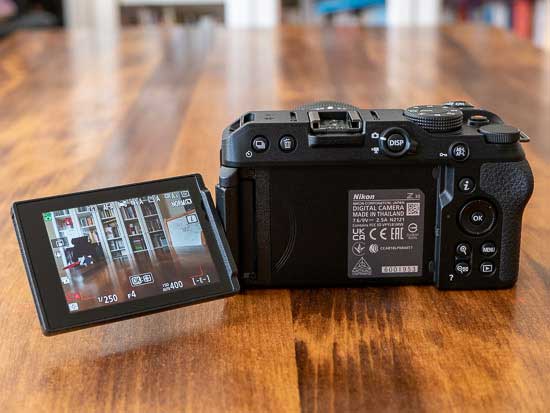 |
If you’re coming to the Z30 from a Nikon DSLR rather than a smartphone, you’ll be instantly very familiar with lots of the buttons, such as AE-L/AF-L, the Info button for accessing a quick menu.
One of the main differences between the Z30 and the Z50 is the larger than normal video-record button that is positioned on top of the Z30 for easier access in both portrait and landscape orientation.
The switch that was located on top of the Z50 for alternating between shooting video and stills has now been moved to the rear of the Z30, encircling the Display button.
To the left of the lens mount are two customisable function buttons which are useful for assigning often used settings to. A lens release button is found on the right of the mount.
Moving to the top of the Z30, you’ll find another familiarity in the shape of the mode dial. From here, you can switch between the different shooting modes that the Z30 offers, including M/A/S/P as well as fully automatic.
There’s space for three different groups of custom settings marked U1, U2 and U3, which is very handy if you often find yourself shooting in a specific kind of situation, such as low light or fast-moving subjects.
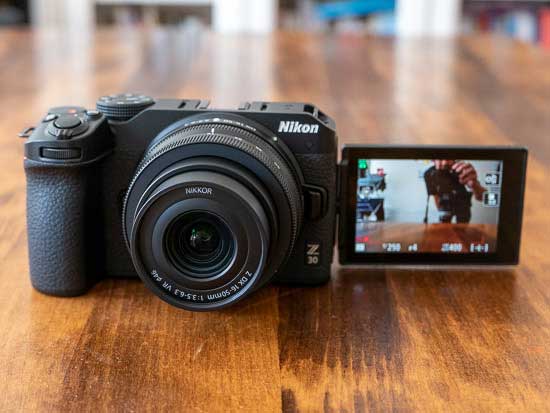 |
There’s no button in the middle of the dial which must be pressed before you can rotate the dial, as on the Z6/Z7 models, although in practice the dial proved to be stiff enough to prevent accidental mode changes when the camera is stored in a bag.
Twin electronic dials occupy the top right of the Z30 – again being very reminiscent of using a Nikon DSLR camera such as the D7300 or D5600.
They can be used together to adjust the shutter speed and aperture, depending on the particular shooting mode you’re currently in.
They can also be used to adjust other settings when holding down other buttons – for example when holding down the ISO button, the rear dial adjusts sensitivity speed, while the front dial enables and disables Auto ISO.
As well as the ISO button, next to the on/off switch you’ll also find a dedicated exposure compensation button.
The Z30 offers a better video mode than the Z50 and is definitely the one to buy if you’re predominantly a videographer.
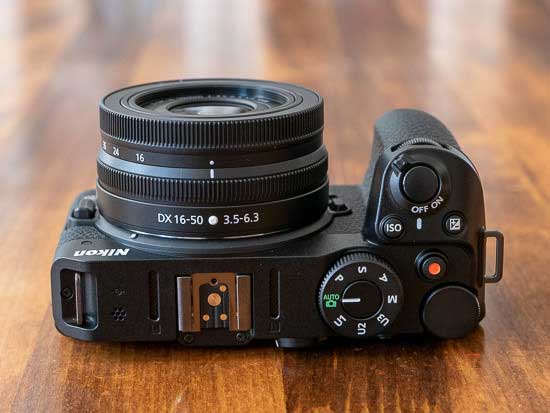 |
On its highest quality setting, the Z30 can record 4K UHD video at 30p in 8-bit. While it would have been nice to see 4K/60p or even 10-bit recording, the Z30 at least doesn’t apply any crop in the 4K mode, something that it’s main rival, the Sony ZV-E10, cannot match (it applies a 1.23x crop in 4k/30p mode).
There’s also a built-in time-lapse feature and interval timer, and Full HD slow-motion movies up to 120fps can be recorded complete with sound.
Talking of sound, the Z30 has stereo microphones located on its top plate with the option to fit a wind screen (not supplied as standard) and the option to attach an external mic. It also offers an onboard wind-noise reduction function.
Disappointingly, though, Nikon haven’t also found room for a dedicated headphone mic, something that the Sony ZV-E10 offers, so you can’t monitor the audio out in the field other than the on-screen audio level indicators.
One of the key improvements to the Z30 are much longer recording times – up to 125 minutes on the Z30 versus 30 minutes on the Z50 – although the Z30 can actually only record for approximately 35 minutes for 4K/30p.
Although there’s no in-body image stabilisation on this camera, Nikon’s electronic Vibration Reduction is available to help keep your footage nice and steady, although it applies a 1.3x crop factor to do so.
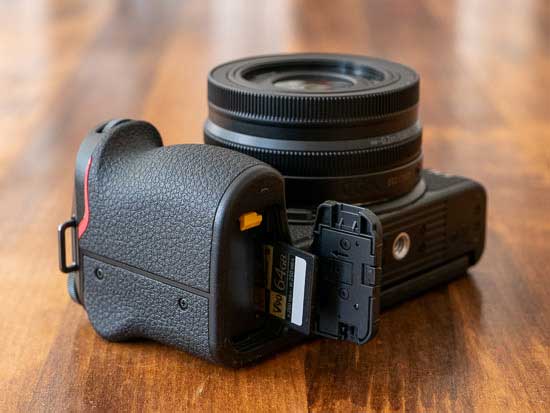 |
On the Z30 if you turn the tilting monitor to face forwards, the camera instantly engages the new Self Portrait mode, clearing the screen for an unobstructed portrait view. There’s also a handy red tally light to clearly let you know when the camera is recording.
The Z30’s new Video AF mode, which employs full-time autofocusing when recording, ideal for shooting action or first-person vlogs while on the move.
Moving to the rear of the Nikon Z30, the removal of the viewfinder means that there is only one way to compose your image – via the LCD screen.
The 3-inch, 1040K-dot touchscreen LCD is rather middle-of-the-road in terms of its specification, certainly not class-leading, but at least it is a vari-angle design that’s fully articulating to make taking selfies and vlogging a lot easier.
By contrast, the Z50 has a 180-degree flip touch-screen that’s much more suited to stills photography – this is one of the key areas of difference between the two models.
The Z30 gives you the option to change the AF point via the screen, as well as move around menus and make appropriate selections. Using the touchscreen in conjunction with the physical buttons is a great way to use the Z30, depending on how best you like to work.
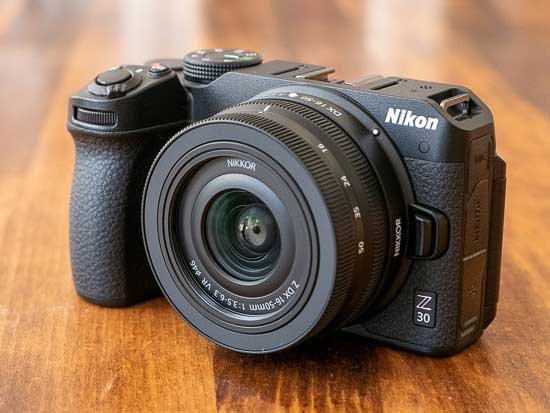 |
Nikon have also retained a great feature from the Z50 that that we’d not previously seen on any other camera before.
The Z30 has a permanent column of three controls on the right of the touchscreen. Starting from the top, there are icons for zooming in, zooming out, and toggling between the various display modes. It’s quite a neat, if somewhat limited idea, that’s meant to make the transition from a smartphone to the Z30 easier.
The familiar Nikon Quick menu can be accessed by pressing the “i” button on the rear of the Z30. In this menu you’ll find – by default – a set of commonly used settings.
You can change the options which appear in this menu though, if you find there’s another setting that you more often require quick access to.
One of the big advantages that cameras like the Z30 offer over traditional DSLRs is their ability to shoot completely silently. Certain kinds of photographers, such as wedding or sports photographers will likely find this function appealing.
Of course, it’s not new to the mirrorless market as a whole, but if you were previously a Nikon DSLR shooter before moving to the Z30, having this option may open up new some shooting opportunities.
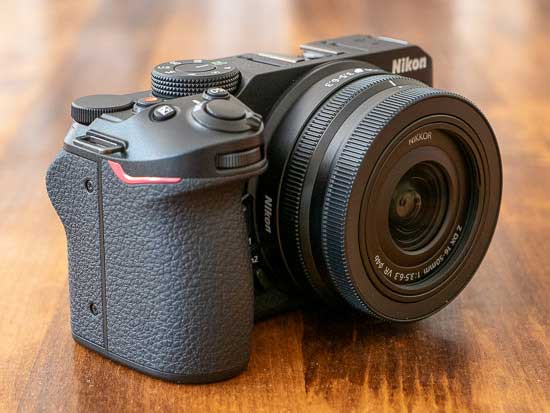 |
A key difference between the Z30 and the more expensive Z6/7-series cameras is the AF system, which as you’d perhaps expect isn’t quite as capable on the former camera.
Having said that, the Z30’s sensor still has a very respectable 209 PDAF points and the coverage is an impressive 90% both horizontally and vertically, both just like the Z50.
In practice, even when using the two slow kit lenses, the Z30’s auto-focusing doesn’t seem to be noticeably more sluggish in the majority of shooting situations than the Z6/Z7.
It locks on pretty much instantaneously for static subjects in good light, while in low light, focusing is a little slower, but not unacceptably slow, with the Z30 capable of focusing down to an impressive -4EV. The same capable Eye AF system as found in the Z6/7 is also onboard.
The Nikon Z30 camera can shoot at 11fps, which is actually faster than the max 9fps that the Z7 can muster and only marginally slower than the Z6′ 12fps.
It performs best when attempting to keep the subject under an active AF point (using Single-Point AF or Wide-Area AF), rather than activating the tracking focus.
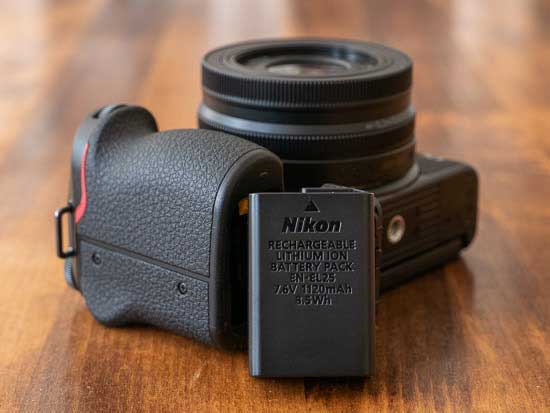 |
Both Wi-Fi and Bluetooth connectivity are included, primarily designed for use with Nikon’s Snapseed app.
After some early teething issues, on the whole using the app is a much more pleasant experience than when it first appeared a few years ago.
You can use it to automatically send files over to your phone for sharing online, which is useful for social media aficionados.
As it is aimed squarely at consumers than professionals, there’s just a single memory card slot on the Z30 which supports the ubiquitous SD format.
Rather annoyingly for this kind of camera, though, the card slot is in the same compartment as the battery on the bottom of the camera, rather than in a dedicated compartment on the side.
At the time of writing, there are only three DX format, Z mount lenses for the Z30. They are the NIKKOR Z DX 16-50mm f/3.5-6.3 VR. the NIKKOR Z DX 30-230mm f/4.5-6.3 VR and the NIKKOR Z DX 18-140mm f/3.5-6.3 VR.
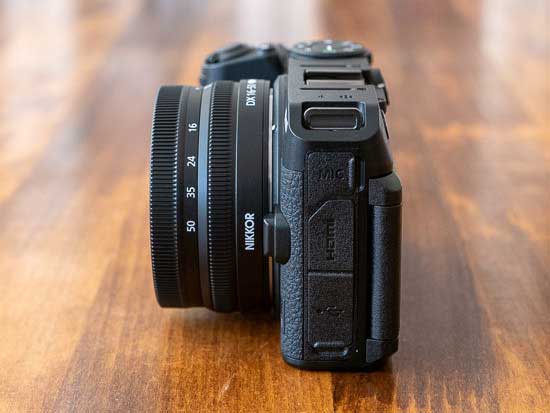 |
While we expect Nikon to bring more to the market during the next months and years, for the time being the lack of available lenses are the main weakness of buying into the Z30 system.
All three zooms are stabilised, important as the Z30 doesn’t have built-in IBIS, feature a retractable design to make them more compact, and together cover virtually every focal length that most of the Z30’s target market will ever need.
The super-slim 16-50mm pancake zoom in particular is worthy of praise, forming a tiny package with the Z30, yet still featuring a mechanical zoom mechanism, rather than a power zoom system.
But they are constructed from plastic, offer slow maximum apertures that make it more difficult to throw the background out of focus, and also suffer from a lack of sharpness when shooting wide open.
While you can use the generally excellent FX Z-mount lenses that Nikon has released, they’re pretty expensive compared to the body-only price of the Z30, and suffer from having a 1.5x crop factor applied.
For the time being, though, Nikon seems to think that some Z30 owners who aren’t satisfied with the kit lenses will naturally gravitate towards the faster primes and zooms that they’ve released for the Z6 and Z7 – we’re not so sure…
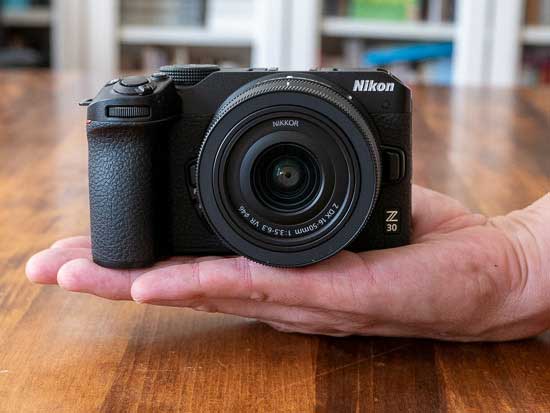 |
For anybody with an existing array of DX and FX F-mount lenses, purchasing an FTZ adapter with the Z30 is a good idea. The adapter does not include a focusing motor within it, so only lenses which have focusing motors can take advantage of the Z30’s autofocus system, otherwise you’ll have to engage manual focus.
While we can’t see too many new Z30 owners going down this route, if you’re already invested in a Nikon full-frame system, be it DSLR or mirrorless, it’s great to see Nikon supporting those lenses on their new DX-format camera.
The Z30’s EN-EL25 battery has a battery life rating of 300 shots, according to CIPA. That doesn’t sound like a lot, but it’s important to remember that the aggressive power consumption of a standard CIPA test is unlikely to be replicated by the average user.
Instead, with good power management practices – such as turning the camera off when not in use – it’s unlikely most average users would need a second battery. If you’re a particularly rapid shooter, it’s certainly worth investing in a second battery, though.
Just like the Z50, the Z30 can be charged via its Micro USB port, so another option could be to pick up an external battery pack so you can charge the camera on the go.
Image Quality
All of the sample images in this review were taken using the 20.9 megapixel Fine JPEG setting, which produces an average image size of around 9Mb.
Noise
The base sensitivity of the Nikon Z30 is ISO 100. At the other end of the scale, the highest native sensitivity is ISO 51200, but two boosted settings, ISO 102400 and ISO 204800, are also available.
| JPEG | RAW |
|
ISO 100 (100% Crop) |
ISO 100 (100% Crop) |
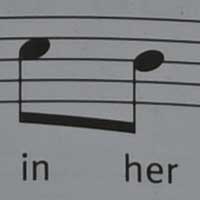 |
 |
|
ISO 200 (100% Crop) |
ISO 200 (100% Crop) |
 |
 |
|
ISO 400 (100% Crop) |
ISO 400 (100% Crop) |
 |
 |
|
ISO 800 (100% Crop) |
ISO 800 (100% Crop) |
 |
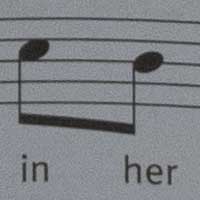 |
|
ISO 1600 (100% Crop) |
ISO 1600 (100% Crop) |
 |
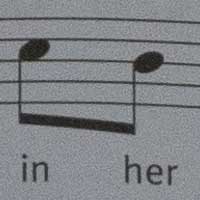 |
|
ISO 3200 (100% Crop) |
ISO 3200 (100% Crop) |
 |
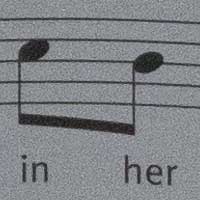 |
|
ISO 6400 (100% Crop) |
ISO 6400 (100% Crop) |
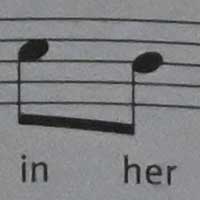 |
 |
|
ISO 12800 (100% Crop) |
ISO 12800 (100% Crop) |
 |
 |
|
ISO 25600 (100% Crop) |
ISO 25600 (100% Crop) |
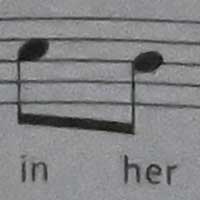 |
 |
|
ISO 51200 (100% Crop) |
ISO 51200 (100% Crop) |
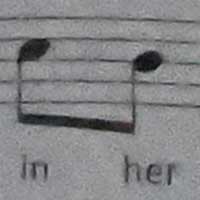 |
 |
|
ISO 102400 (100% Crop) |
ISO 102400 (100% Crop) |
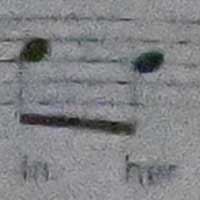 |
 |
File Quality
The file quality settings available on the Nikon Z30 include Basic, Normal and Fine for JPEGs, and the camera can also shoot 12- or 14-bit NEFs (Nikon’s proprietary raw file format).
| Fine (9.41Mb) (100% Crop) |
Normal (6.72Mb) (100% Crop) |
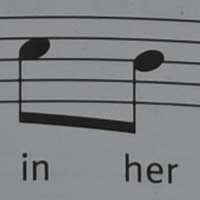 |
 |
| Basic (2.25Mb) (100% Crop) |
Raw (26.3Mb) (100% Crop) |
 |
 |
Night
The Nikon Z30 lets you dial in shutter speeds of up to 30 seconds and has a Bulb mode as well for exposure times of practically any length, which is very good news if you are seriously interested in night photography. There is an optional long-exposure noise reduction function that can be activated to filter out any hot pixels that may appear when extremely slow shutter speeds are used.

Active D-lighting (ADL)
D-lighting is Nikon’s dynamic range optimisation tool that attempts to squeeze the full dynamic range of the sensor into JPEGs. Active D-lighting works “on the fly”, before the in-camera processing engine converts the raw image data into JPEGs. The available settings are Off, Low, Normal, High and Extra High, plus an Auto mode.
High Dynamic Range (HDR)
In the HDR mode the Nikon Z30 combines three images taken at slightly different exposure levels into a single image with greater dynamic range. There are four different HDR setting available – Auto, 1EV, 2EV and 3 EV, with the latter being the most powerful.
Picture Controls
Nikon’s extensive range of Picture Controls are preset combinations of sharpening, contrast, brightness, saturation and hue. All 28 different Picture Controls can be tweaked to your liking, then saved and transferred to other cameras.
Sample Images
This is a selection of sample images from the Nikon Z30 camera, which were all taken using the 20.9 megapixel Fine JPEG setting. The thumbnails below link to the full-sized versions, which have not been altered in any way.
Sample RAW Images
The Nikon Z30 enables users to capture RAW and JPEG format files. We’ve provided some Nikon RAW (NEF) samples for you to download (thumbnail images shown below are not 100% representative).
Sample Movies & Video
This is a sample movie at the quality setting of 3840×2160 pixels at 30 frames per second. Please note that this 15 second movie is 240Mb in size.
This is a sample movie at the quality setting of 3840×2160 pixels at 25 frames per second. Please note that this 12 second movie is 193Mb in size.
This is a sample movie at the quality setting of 3840×2160 pixels at 24 frames per second. Please note that this 11 second movie is 183Mb in size.
This is a sample movie at the quality setting of 1920×1080 pixels at 120 frames per second. Please note that this 11 second movie is 181Mb in size.
This is a sample movie at the quality setting of 1920×1080 pixels at 60 frames per second. Please note that this 11 second movie is 68Mb in size.
This is a sample movie at the quality setting of 1920×1080 pixels at 30 frames per second. Please note that this 11 second movie is 36Mb in size.
This is a sample 4x slow-motion movie at the quality setting of 1920×1080 pixels at 120 frames per second. Please note that this 41 second movie is 170Mb in size.
This is a sample movie at the quality setting of 3840×2160 pixels at 30 frames per second. Please note that this 9 second movie is 156Mb in size.
This is a sample movie at the quality setting of 1920×1080 pixels at 120 frames per second. Please note that this 9 second movie is 141Mb in size.
Product Images

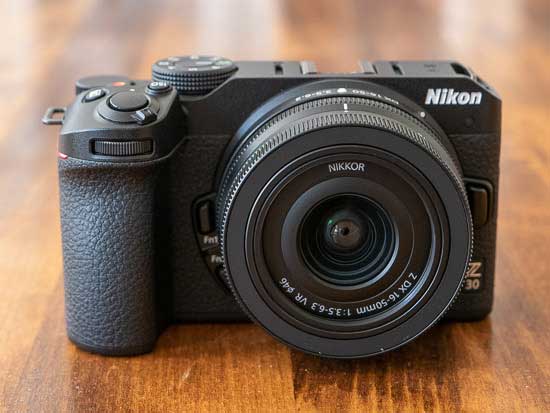
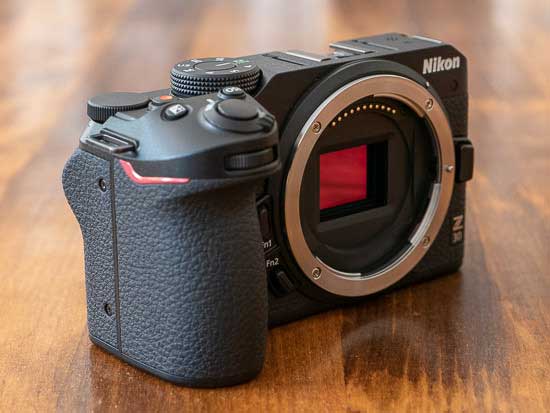

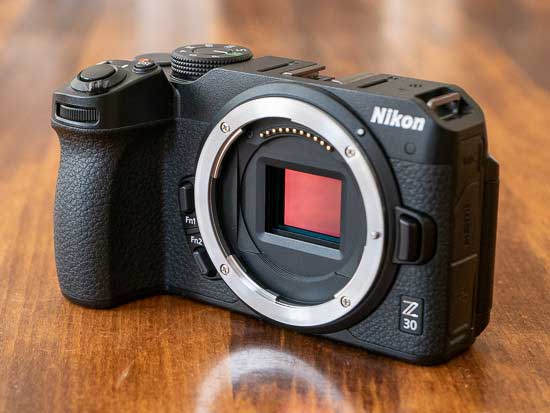

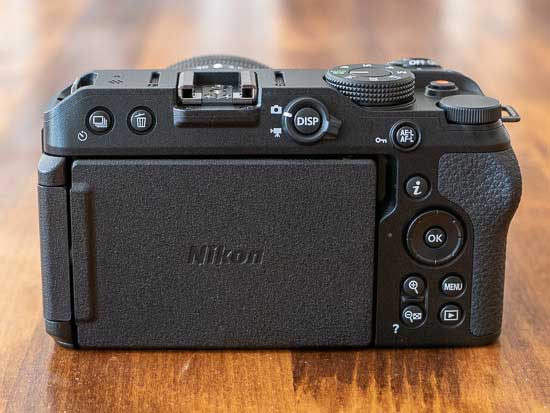
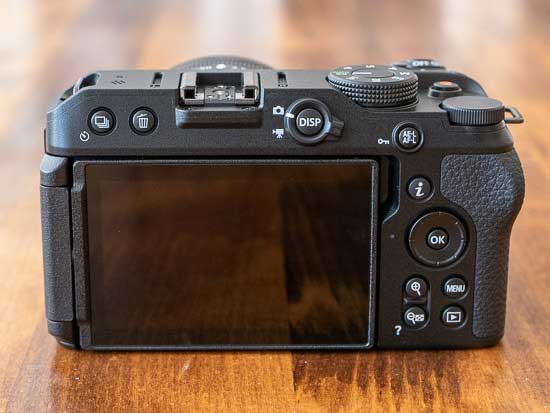

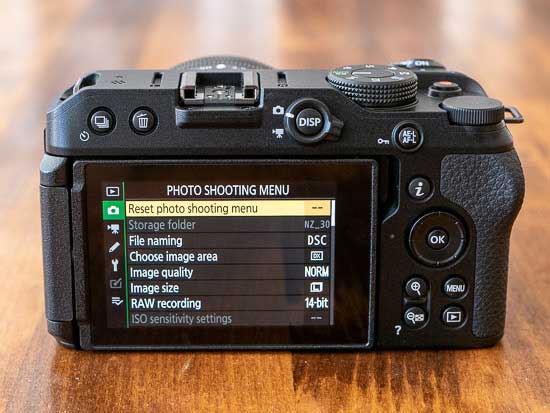
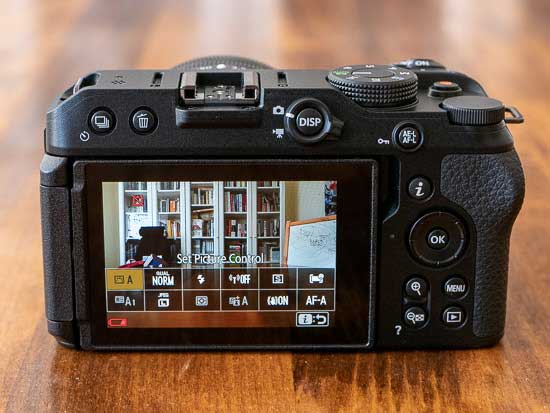
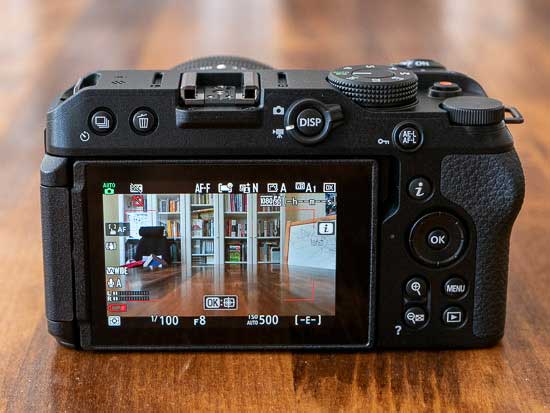
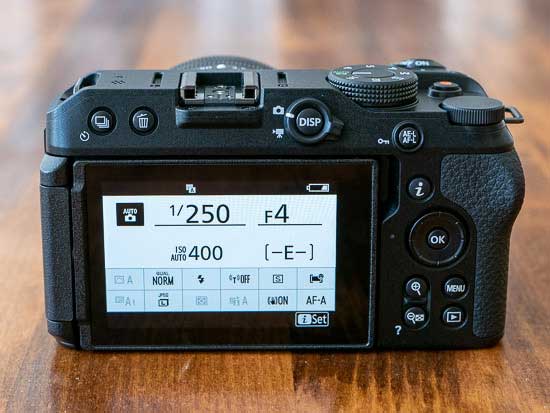



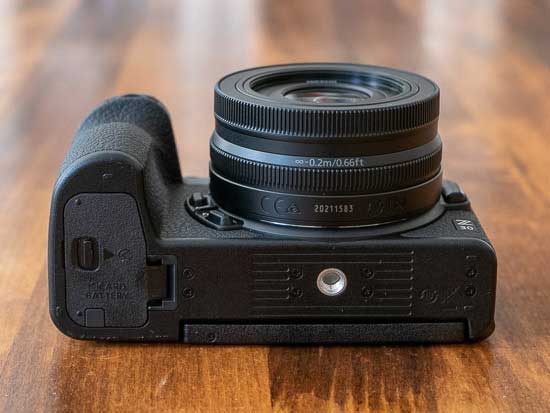
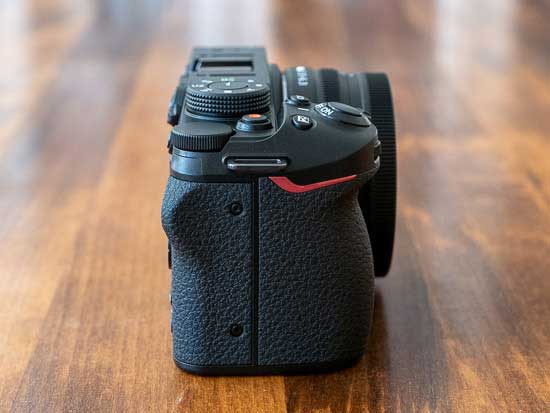


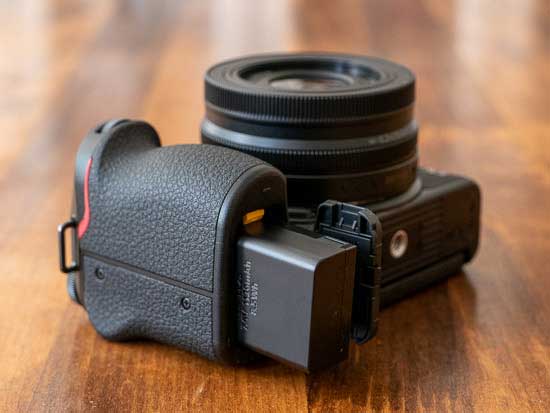


Conclusion
Aimed squarely at both vloggers and the Sony ZV-E10, the new Nikon Z30 is a literally cut-down version of the Z50 model, with added bells and whistles aimed almost entirely at video content creators looking for a light, portable upgrade from their smartphone.
By and large the Z30 succeeds in its main aim of targeting a brand new audience for Nikon, both in terms of the Z30’s feature-set and its more aggressive price-point – this is currently the cheapest way to buy into the Nikon mirrorless system.
Nikon have been quite conservative with the Z30, though, in that it does resemble the almost 3-year-old Z50 in lots of ways, so much so that if you predominantly shoot stills, the latter camera is still a better investment despite its age principally thanks to the inclusion of a viewfinder.
For vloggers and content creators, the cheaper and simpler to use Z30 also offers a wealth of extra video features to make recording easier than on the Z50, including the fully articulating screen, tally light and 125 minute recording limit.
We are a little bit mystified that they didn’t go even further, though, by offering a headphone socket in addition to the stereo mics, which makes it more difficult than on its main rival to judge the sound quality.
The Z50’s 21 megapixel APS-C sensor continues to deliver the goods in terms of still and video quality alike, with the uncropped 4K footage and slow-motion 1080p options proving to be great features at this price point, but note that you’ll get the same image quality from the Z50 and Z fc models too.
In addition to the continued lack of an AF joystick, which is perhaps less pressing on this model than the Z50, the notable flies in the ointment are the lack of in-camera image stabilisation and the still very limited range of DX Z-mount lenses on offer.
Nearly three years after the launch of the Z50, Nikon still only offer a derisory three APS-C format lenses, and two of those are similar super-zooms. Compared to the likes of Fujifilm and Sony, Nikon are several generations behind their main rivals when it comes to their lens range.
It’s all very well saying that you can use full-frame FX series lenses on the Z30 – either mirrorless or DSLR – but while it’s true that they work very well on the Z30, we can’t see many of this camera’s target audience wanting to add either the size or cost of an FX lens to their tiny new DX format camera.
You can also employ the FTZ adapter to mount Nikon’s bigger range of DX DSLR lenses on the Z30, but again this adds unwanted bulk and complexity to what is supposed to be a straight-forward product aimed at smartphone upgraders.
While the three DX Z-series zoom lenses that Nikon do offer are well-thought-out, offering vibration reduction in a compact, retractable design and covering a very wide focal range, their all-plastic construction and slow maximum apertures limit their appeal for both enthusiasts and more casual users alike, especially if you’re after that shallow bokeh look that even most smartphones now offer.
Ultimately, the new Z30 is a fairly ambitious attempt to access a completely new audience for Nikon, and in most ways it should satisfy the vloggers that it’s clearly targeted at.
We do have quite serious reservations about the lack of lenses available for this still fledgeling system, though, and also feel that Nikon could have gone even further in making the Z30 even better suited to the younger end of the market.
| Ratings (out of 5) | |
|---|---|
| Design | 4 |
| Features | 4 |
| Ease-of-use | 4 |
| Image quality | 4.5 |
| Value for money | 4.5 |
Main Rivals
Listed below are some of the rivals of the Nikon Z30.
The Canon EOS M6 Mark II is a new mid-range mirrorless camera with a 32 megapixel APS-C sensor, 4K video recording, 14fps burst shooting, a tilting touchscreen and optional electronic viewfinder. Can it beat the likes of the Sony A6400 and Fujifilm X-T30 cameras? Find out now by reading our Canon EOS M6 Mark II review…
The Fujifilm X-S10 mirrorless camera aims to bring the renowned X-series image quality and colour science to a wider audience by being smaller, easier to use and cheaper than the company’s flagship cameras. Does it strike the right balance between simplicity and accessibility? Find out now by reading our in-depth Fuji XS10 review…
Nikon have introduced their second APS-C, cropped-sensor mirrorless camera with the launch of the Z fc. Almost identical to the Z50 model in terms of its key specifications, the new Z fc offers a much more retro, classic design. Read our in-depth Nikon Z fc review to find out if it’s the perfect blend of old and new…
Nikon have introduced their first APS-C, cropped-sensor mirrorless camera with the launch of the Z50, accompanied by two kit zoom lenses. Can the Z50 take on the likes of the well established Sony A6000-series and Canon EOS-M range, not to mention Fujifilm with its line-up of excellent APS-C bodies and lenses? Find out now by reading our in-depth Nikon Z50 review.
The Sony A6100 is a new entry-level mirrorless camera that features the fastest auto-focusing system in the world. With a 24.2 megapixel APS-C sensor, 4K movie recording, a tilting OLED screen, electronic viewfinder and built-in flash, the Sony A6100 also offers 11fps burst shooting, bluetooth, wi-fi and NFC connectivity, and USB charging. Read our Sony A6100 review now to find out if it’s the perfect camera for photography beginners…
The Sony ZV-E10 is a new APS-C sensor mirrorless camera that’s clearly targeted at videographers, with a vari-angle screen, fast auto-focusing, three-capsule direction microphone, and a wealth of vlogger-friendly shooting modes. Is this the ultimate mirrorless camera for aspiring YouTube creators? Read our in-depth Sony ZV-E10 review to find out…
Specifications
|
Type |
Mirrorless |
|---|---|
|
Lens mount |
Nikon Z mount |
|
Image sensor |
DX, CMOS, 23.5 mm x 15.7 mm |
|
Total pixels |
21.51 million |
|
Dust-reduction system |
Image Dust Off reference data (NX Studio software required) |
|
Effective pixels |
20.9 million |
|
Image size (pixels) |
[DX (24×16)] selected for image area: (L)5568 x 3712 (20.7 million), (M)4176 x 2784 (11.6 million), (S)2784 x 1856 (5.2 million); [1:1 (16×16)] selected for image area: (L)3712 x 3712 (13.8 million), (M)2784 x 2784 (7.8 million), (S)1856 x 1856 (3.4 million); [16:9 (24×14)] selected for image area: (L)5568 x 3128 (17.4 million), (M)4176 x 2344 (9.8 million), (S)2784 x 1560 (4.3 million); Photographs taken while recording videos at a frame size of 3840 x 2160: 3840 x 2160; Photographs taken while recording videos at other frame sizes: 1920 x 1080 |
|
Storage file formats |
NEF (RAW): 12 or 14 bit, JPEG: JPEG-Baseline compliant with fine (approx. 1:4), normal (approx. 1:8), or basic (approx. 1:16) compression, NEF (RAW)+JPEG: Single photograph recorded in both NEF (RAW) and JPEG formats |
|
Picture Control System |
Auto, Standard, Neutral, Vivid, Monochrome, Portrait, Landscape, Flat, Creative Picture Controls (Dream, Morning, Pop, Sunday, Somber, Dramatic, Silence, Bleached, Melancholic, Pure, Denim, Toy, Sepia, Blue, Red, Pink, Charcoal, Graphite, Binary, Carbon); selected Picture Control can be modified; storage for custom Picture Controls |
|
Storage media |
SD, SDHC (UHS-I compliant), SDXC (UHS-I compliant) |
|
Card slot |
1 Secure Digital (SD) card |
|
File system |
DCF 2.0, Exif 2.31 |
|
Compatible lenses |
Z mount NIKKOR lenses F mount NIKKOR lenses (mount adapter required; restrictions may apply) |
|
Shutter type |
Electronically-controlled vertical-travel focal-plane mechanical shutter; electronic front-curtain shutter; electronic shutter |
|
Shutter speed |
1/4000to, 30s, (step sizes of 1/3 EV), bulb, time |
|
Flash sync speed |
Synchronizes with shutter at X=1/200 s or slower; supported with auto FP high-speed sync |
|
Release mode |
S (single frame), CL (continuous low-speed), CH (continuous high-speed), Continuous H (extended), Self-timer |
|
Frame advance rate1 |
Up to 11 fps, Continuous L: Approx. 1 to 4 fps, Continuous H: Approx. 5 fps, Continuous H (extended): Approx. 11 fps |
|
Self-timer |
2 s, 5 s, 10 s, 20 s; 1 to 9 exposures at intervals of 0.5, 1, 2, or 3 s |
|
Exposure metering |
TTL metering using camera image sensor |
|
Metering method |
Matrix metering, Center-weighted metering: Weight of 75% given to 8 mm circle in center of frame; weighting can instead be based on average of entire frame, Spot metering: Meters 3.5 mm circle (about 2.5% of frame) centered on selected focus point, Highlight-weighted metering |
|
Metering range (ISO 100, f/1.4 lens, 20 °C/68 °F) |
-4 to +17 EV |
|
Mode |
Auto, P: programmed auto with flexible program, S: shutter-priority auto, A: aperture-priority auto, M: manual U1, U2 and U3: user settings modes |
|
Exposure compensation |
Range: –5 to +5 EV, Increment: 1/3 step |
|
Exposure lock |
Luminosity locked at detected value |
|
ISO sensitivity |
ISO 100 to 51200 in steps of 1/3 EV; can also be set to approx. 1 EV above ISO 51200 (ISO 102400 equivalent) or to approx. 2 EV above ISO 51200 (ISO 204800 equivalent); auto ISO sensitivity control available (Recommended Exposure Index) |
|
Active D-Lighting |
Auto, Extra high, High, Normal, Low, and Off |
|
Multiple exposure |
Add, average, lighten, darken |
|
Other options |
HDR (high dynamic range), photo mode flicker reduction |
|
Autofocus |
Hybrid phase-detection/contrast AF |
|
Detection range |
-4.5 to +19 EV2, Without low-light AF: -3 to +19 EV |
|
Lens servo |
Single-servo AF (AF-S), Continuous-servo AF (AF-C), AF mode auto-switch (AF-A; available only in photo mode), full-time AF (AF-F; available only in video mode), predictive focus tracking, Manual focus (M): Electronic rangefinder can be used |
|
Focus points |
209, Number of focus points available in photo mode with single-point AF selected for AF-area mode and DX selected for image area |
|
AF-area mode |
Pinpoint AF (photo mode only), single-point AF, dynamic-area AF (photo mode only), wide-area AF (S), wide-area AF (L), wide-area AF (L-people), wide-area AF (L-animals), auto-area AF, auto-area AF (people), auto-area AF (animals) |
|
Focus lock |
Press the AE-L/AF-L button or press shutter-release button halfway (single-servo AF/AF-S) |
|
Flash control |
TTL: i-TTL flash control; i-TTL balanced fill-flash is used with matrix, center-weighted, and highlight-weighted metering, standard i-TTL fill-flash with spot metering |
|
Flash modes |
Front-curtain sync, slow sync, rear-curtain sync, red-eye reduction, red-eye reduction with slow sync, off |
|
Flash compensation |
-3 to +1 EV in steps of 1/3 EV, available in modes P, S, A, and M |
|
Flash-ready indicator |
Lights when optional flash unit is fully charged; flashes as underexposure warning after flash is fired at full output |
|
Accessory shoe |
ISO 518 hot-shoe with sync and data contacts and safety lock |
|
Nikon Creative Lighting System |
i-TTL flash control, optical Advanced Wireless Lighting, FV lock, Color Information Communication, auto FP high-speed sync |
|
White balance |
Auto (3 types), natural light auto, direct sunlight, cloudy, shade, incandescent, fluorescent (3 types), flash, choose color temperature (2500 K–10,000 K), preset manual (up to 6 values can be stored), all with fine-tuning except choose color temperature |
|
Bracketing types |
Exposure and/or flash, white balance, ADL |
|
Movie – metering |
TTL exposure metering using main image sensor, TTL metering using camera image sensor |
|
Movie – metering |
Matrix, center-weighted, or highlight-weighted |
|
Movie – frame size (pixels) and frame rate3 4 |
3840 x 2160 (4K UHD): 30p (progressive)/25p/24p, 1920 x 1080: 120p/100p/60p/50p/30p/25p/24p, 1920 x 1080 slow-motion: 30p (x4)/25p (x4)/24p (x5) |
|
Movie – file format |
MOV, MP4 |
|
Movie – video compression |
H.264/MPEG-4 Advanced Video Coding |
|
Movie – audio recording format |
Linear PCM (for videos recorded in MOV format), AAC (for videos recorded in MP4 format) |
|
Movie – audio recording device |
Built-in stereo or external microphone with attenuator option; sensitivity adjustable |
|
Movie – exposure compensation |
Range: –3 to +3 EV, Increment: 1/3 step |
|
Movie – ISO sensitivity |
M: Manual selection (ISO 100 to 25600; step size of 1/3 EV); auto ISO sensitivity control (ISO 100 to 25600) available with selectable upper limit P, S, A: Auto ISO sensitivity control (ISO 100 to 25600) with selectable upper limit, Auto: Auto ISO sensitivity control (ISO 100 to 25600) (Recommended Exposure Index) |
|
Movie – Active D-Lighting |
Same as photo settings, Extra high, High, Normal, Low, and Off |
|
Movie – Other options |
Time-lapse video recording, electronic vibration reduction, time codes, with REC lamp |
|
Monitor |
7.5-cm (3.0–in.) diagonal, vari-angle TFT touch-sensitive LCD with 170° viewing angle, approximately 100% frame coverage, and color balance and 11-level manual brightness controls, Approx. 1040k-dot |
|
Playback |
Full-frame and thumbnail (4, 9, or 72 images or calendar) playback with playback zoom, playback zoom cropping, video playback, photo and/or video slide shows, histogram display, highlights, photo information, location data display, auto image rotation, and picture rating |
|
USB |
Type C USB connector (SuperSpeed USB); connection to built-in USB port is recommended |
|
HDMI output |
Type D HDMI connector |
|
Audio input |
Stereo mini-pin jack (3.5 mm diameter; plug-in power supported) |
|
Wi-Fi (Wireless LAN) standards |
IEEE 802.11b/g/n |
|
Wi-Fi (Wireless LAN) operating frequency |
2412 to 2462 MHz (channel 11) |
|
Wi-Fi (Wireless LAN) maximum output power |
2.4 GHz band: 4.5 dBm |
|
Wi-Fi (Wireless LAN) security |
Open system, WPA2-PSK |
|
Bluetooth standards |
Bluetooth Specification Version 4.2, Bluetooth: 2402 to 2480 MHz, Bluetooth Low Energy: 2402 to 2480 MHz, Bluetooth: –1.0 dBm, Bluetooth Low Energy: –2.5 dBm |
|
Battery |
One EN-EL25 rechargeable Li-ion battery |
|
AC adapter |
EH-7P charging AC adapter (available separately) |
|
Tripod socket |
0.635 cm (1/4 in., ISO 1222) |
|
Dimensions (W x H x D) |
Approx. 128 x 73.5 x 59.5 mm (5.1 x 2.9 x 2.4 in.) |
|
Weight |
Approx. 405 g (14.3 oz.), with battery and memory card but without body cap; approx. 350 g/12.4 oz. (camera body only) |
|
Operating environment – temperature |
0 °C to 40 °C (+32 °F to 104 °F) |
|
Operating environment – humidity |
85% or less (no condensation) |
|
Supplied accessories |
BF-N1 Body Cap、EN-EL25 Rechargeable Li-ion Battery, AN-DC25 Strap, UC-E24 USB Cable |
¹ Maximum frame advance rate as measured by in-house tests.
² Measured in photo mode at ISO 100 and a temperature of 20 °C/68 °F using single-servo AF (AF-S) and a lens with a maximum aperture of f/1.8.
³ Actual frame rates for 120p, 100p, 60p, 50p, 30p, 25p, and 24p are 119.88, 100, 59.94, 50, 29.97, 25, and 23.976 fps respectively.
⁴ Quality selection (normal/high) available at all sizes except 3840 x 2160, 1920 x 1080 120p/100p, and 1920 x 1080 slow-motion, when quality is fixed at high.
⁵ In Full HD/24p/25p at 25℃/77℉. The camera’s ability to always achieve the full 125 minutes is dependent on conditions like battery life or the camera’s internal temperature. Approx. 35 minutes of recording time is available in 4K UHD.







